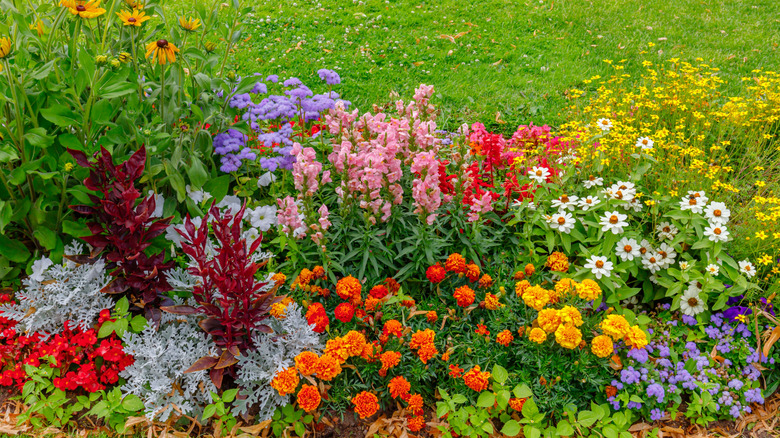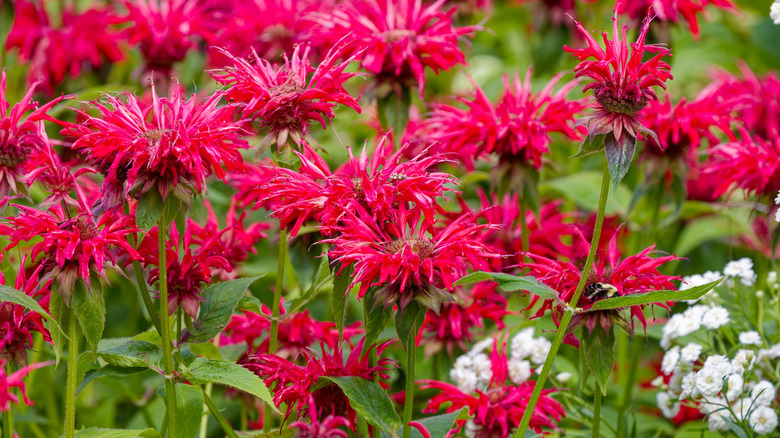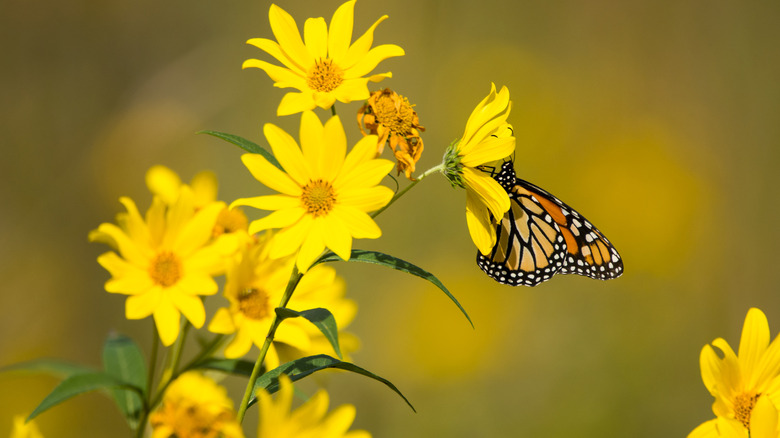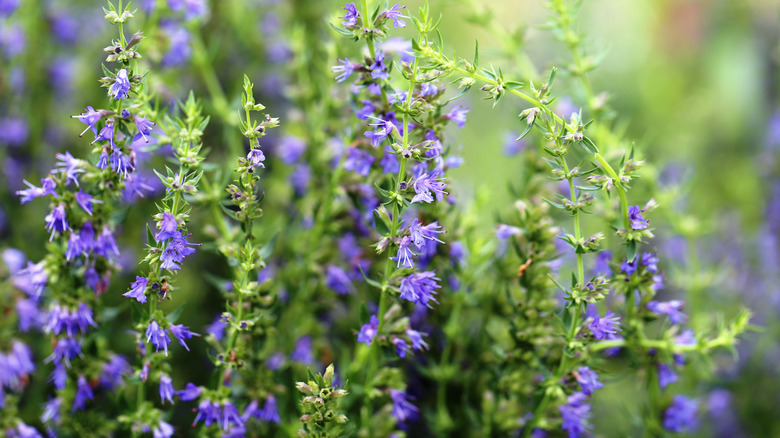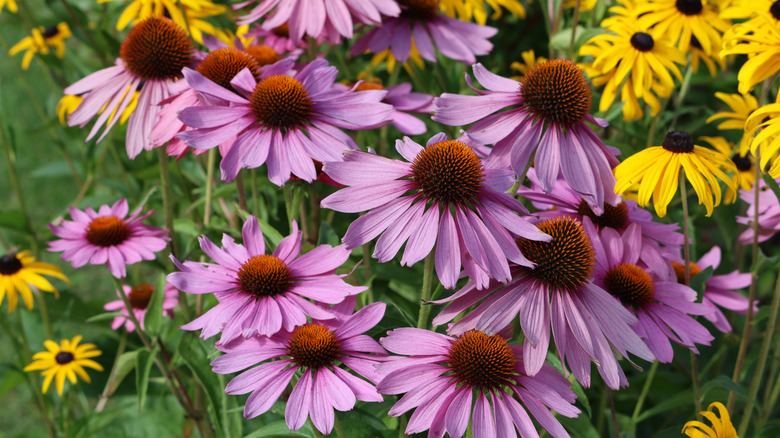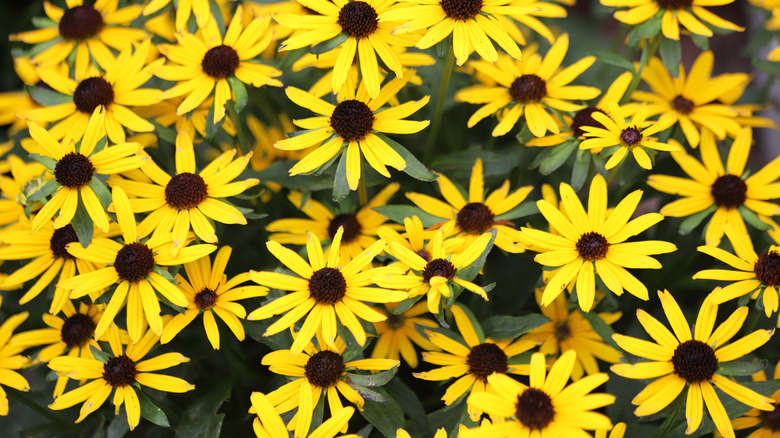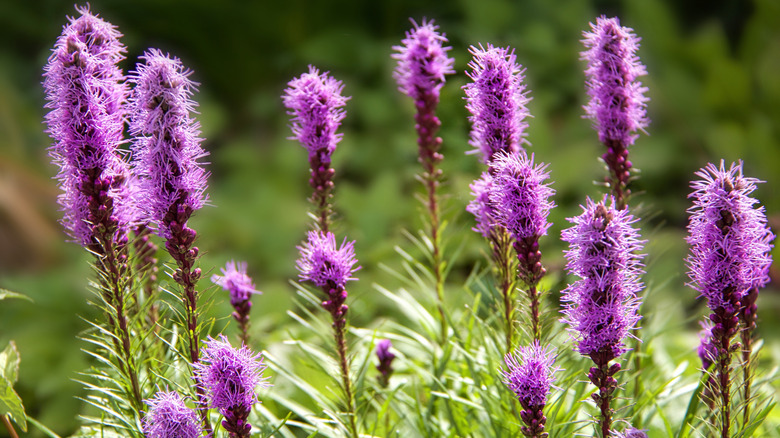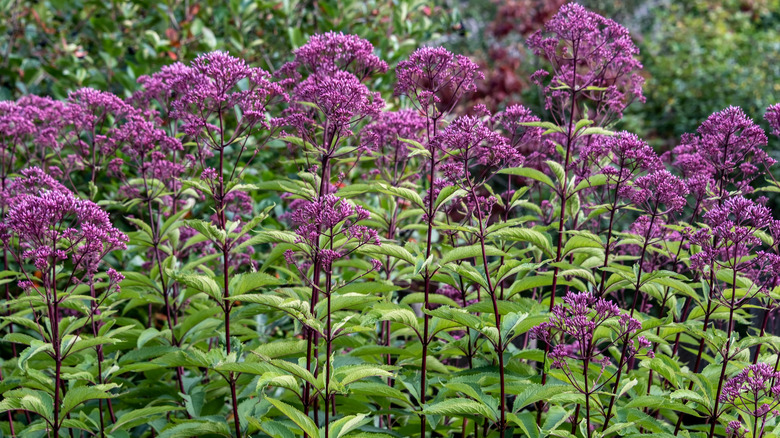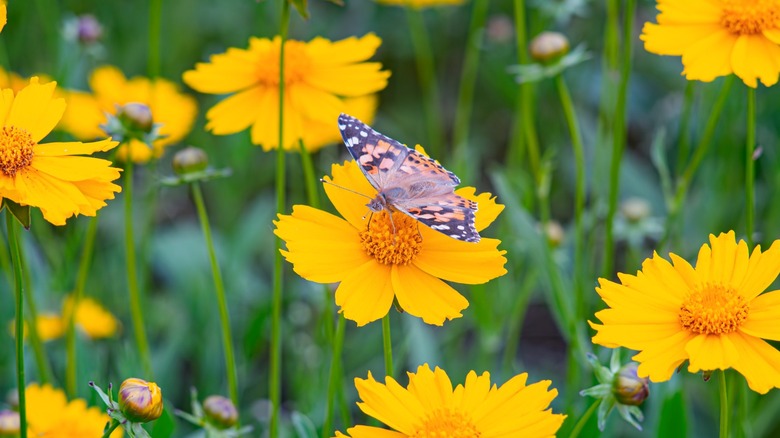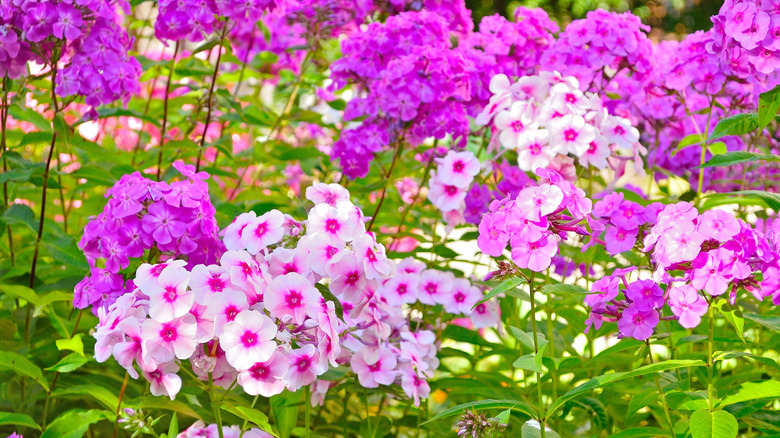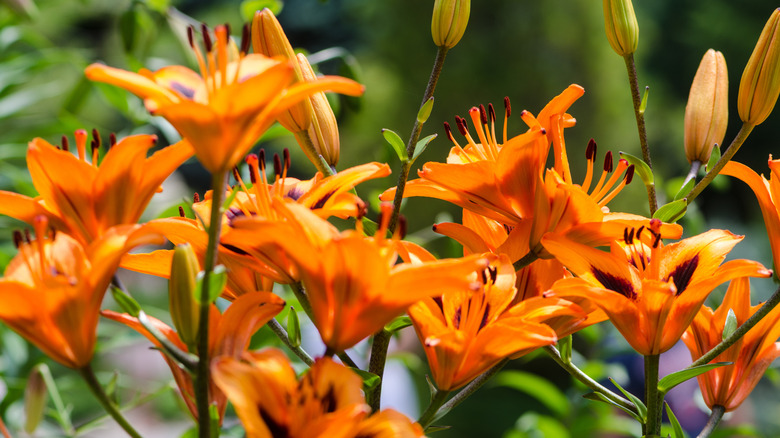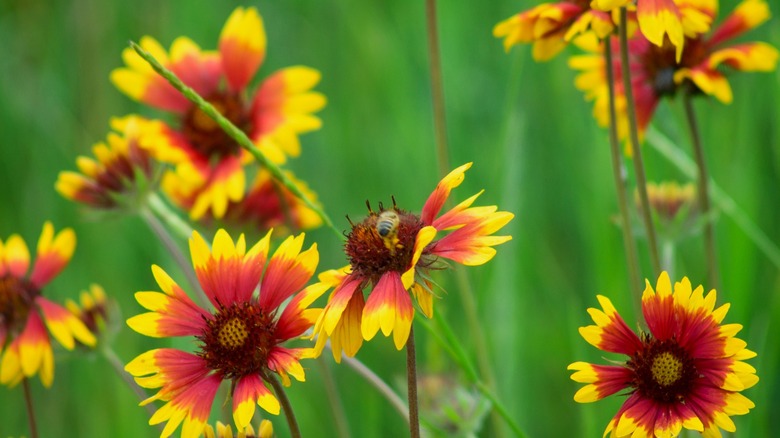13 Stunning Perennial Plants To Brighten Your Summer Garden
With longer days, more sunshine, and backyard fun, it's no wonder that summer is the favorite season of many. And nothing quite captures the spirit of summer like colorful flowers brightening up the garden. It's the time of year when wildlife becomes more active, and planting perennials is one of the best ways to welcome more of your favorite pollinators into your yard. Not only are they fun to watch, but planting reliable, nectar-rich blooms is one of the best ways to support them during their busiest season.
While the idea of having a garden buzzing with life is a dream for many, the thought of having to replant year after year can make it sound more like a chore. Luckily, perennials are long-lasting plants that return for years, so you won't have to deal with digging up and replacing your favorite flowers every year to maintain a colorful landscape. Plus, because they have more time to develop a strong root system, they can often withstand drought better than many annuals. There are stunning perennials for nearly any gardening need. Whether you want to fill a sunny garden bed, create eye-catching containers, or grow varieties that double as beautiful cut flowers, you'll find plenty of lovely options in the list below.
Bee balm
Bee balm (Monarda didyma) is a stunning native perennial known for its shaggy, burgundy blooms that add color nearly all summer long, starting in late June or early July. Its nectar-rich flowers attract a variety of pollinators, including swallowtail butterflies, ruby-throated hummingbirds, and even specialized bees that may struggle to find food elsewhere. It flowers best in moist, fertile, well-drained soil in full sun, though it can tolerate dappled shade. Native to moist woodlands and streambanks across eastern North America, bee balm thrives in gardens within USDA hardiness zones 4 to 9.
Compass plant
For gardeners who want the sunny look of a sunflower without replanting every season, compass plant (Silphium laciniatum) is a low-maintenance perennial alternative in the Asteraceae family. Its large, bright yellow blooms appear in July and last through September, drawing in beautiful butterflies, while the seeds that follow attract birds to your garden. The compass plant thrives in full sun, where its leaves turn their edges north-south to protect themselves from the hot afternoon light, hence its common name. This hardy plant thrives in zones 3 to 8 and tolerates nearly any well-drained soil type, including poor soils.
Hyssop
Hyssop (Hyssopus officinalis) is a stunning, fragrant perennial that will fill your garden with a variety of butterflies all summer long. This subshrub's purplish-blue flower spikes look beautiful nearly anywhere, whether you stick them in a container or use several in a border. When cut, they make an interesting addition to floral arrangements, and the petals can be dried for potpourri. Hyssop's leaves and flowers are edible, so you can use them for teas, salads, or as a garnish. You can grow this versatile plant in zones 4 to 9 in well-drained soil in full sun to part shade.
Purple coneflower
Purple coneflower (Echinacea purpurea) is a stunning plant that'll have birds and butterflies flocking to your yard. Its daisy-like, pinkish-purple blooms last from June to August, adding a splash of color that catches the eye of a variety of pollinators. In fall, it produces an abundance of seeds that are highly sought out by American goldfinches and other songbirds. You can grow this wildlife magnet nearly anywhere in zones 3 to 8. While it prefers well-drained loams and full sun, it can tolerate part shade, poor soil, drought, heat, and humidity.
Black-eyed Susan
Sometimes referred to as gloriosa daisy, black-eyed Susan (Rudbeckia hirta) is another perennial plant that will invite more wildlife to yards in zones 3 to 8. Its bright yellow discs emerge in early summer and will brighten up your garden through fall. Its nectar is a favorite among butterflies, and the plant serves as a larval host plant for the silvery checkerspot, gorgone checkerspot, and others. Plant this beauty next to coneflower, and you'll serve double the seeds that American goldfinches and other songbirds love. It thrives in moderately fertile, well-drained soils in full sun to part shade.
Butterfly weed
You don't want to skip butterfly weed (Asclepias tuberosa) when choosing perennial plants to add color and interest to your garden. Its dense clusters of bright orange, star-shaped flowers are a joy to witness. As a member of the milkweed family, it's a larval host to monarch butterflies, along with several other species. Hardy in zones 3 to 9, butterfly weed will flourish in nearly any soil you stick it in, whether it's dry, rocky, or nutrient-poor. All it asks for is full sun, and it'll bless you with blooms from June to August.
Blazing Star
If you want some of the best purple flowers for your flower garden, you can't go wrong with blazing star (Liatris spicata). This stunning perennial wildflower produces showy pinkish to purplish flower spikes that are loaded with small tubular blooms. Bees, butterflies, and hummingbirds are among the visitors you'll see drinking the nectar when it blooms from July to August or September. It's incredibly low-maintenance, growing well in zone 3 to 8 gardens in full sun to partial shade. Tolerating heat, humidity, drought, and clay soil, it thrives in moist, fertile, well-drained soils.
Joe-pye weed
Joe-pye weed (Eutrochium maculatum) is one of the few plants that can tolerate clay soil, making it easy to grow in nearly any garden in zones 3 to 8. From July to September, this gorgeous perennial puts out fragrant, mauve-pink, flat-topped flower clusters that will have your garden buzzing with pollinators. As a moisture-lover, it's a great choice for a rain garden as well. It prefers fertile, humusy soils in full sun, though it can benefit from some light shade during hot afternoons.
Lanceleaf coreopsis
Also known as tickseed, lanceleaf coreopsis (Coreopsis lanceolata) is an herbaceous perennial wildflower with daisy-like blooms that have toothed petal tips. The flowerheads come to life in late spring, giving pollinators some nectar before other summer bloomers emerge. Luckily, this pretty yellow flower will stick around through July. Because it thrives in rocky or sandy soils and is heat- and humidity-tolerant, it makes the perfect addition to coastal gardens within zones 4 to 9. Choose a sunny area in your yard, ideally where it will receive at least six hours of direct sunlight.
Garden phlox
Garden phlox (Phlox paniculata) is a gorgeous native perennial that comes in a variety of colors, including shades of red, pink, purple, white, blue, and even variegated. Its fragrant clusters of tubular blooms are perfect for attracting your favorite pollinators, including hummingbirds and butterflies. They also make good cut flowers, so make sure to snip a couple of stems for indoor vases. This plant is hardy in zones 4 to 8, although it performs best in climates with less humid, mild summers. Grow garden phlox in fertile, well-drained soil in full sun to partial shade.
Wood lily
Wood lilies (Lilium philadelphicum) are native perennials that bloom with pretty orange flowers in July and August. Like many other lilies, they feature large, tubular blooms that are wildly attractive to pollinators. Their sturdy stems and showy flowers make a standout feature in flower arrangements. Grow wood lilies in zones 4 to 7, ideally in groups if you want to enjoy more than a few flowers. While they can tolerate partial shade, their best flowering is in full sun. Plant them in well-drained, sandy or loamy soil.
Cardinal flower
If you want a colorful summer garden buzzing with hummingbirds, make sure to include cardinal flower (Lobelia cardinalis) for pops of red. The rich, scarlet tubular blooms are arranged in showy terminal spikes, creating a striking display in any landscape. While the long tubes aren't ideal for short-tongued pollinators, they're perfectly suited for a hummingbird's long beak. This native perennial thrives in wet conditions, even tolerating brief flooding, so it makes an excellent option for a rain garden. It's hardy in zones 3 to 9, growing best when given afternoon shade in regions with hot summers.
Blanket flower
With an exceptionally long blooming season that lasts from May to September, it's hard not to love blanket flower (Gaillardia aristata). The daisy-like petals of blanket flower radiate sunset hues, with shades of red, orange, and yellow. Not only do they add a burst of color to any container, bed, or border, but they're also attractive to bees and butterflies. They're easily grown in hardiness zones 3 to 9, thriving in full sun and soil with good drainage.
